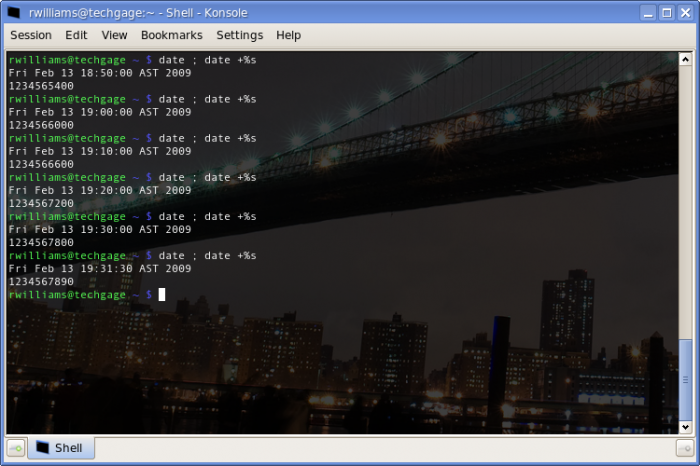Unix-based operating systems may allow users to check for the system time in a human-readable format, but deep-down, its clock is relatively simple. The Unix internal clock officially began at midnight on January 1, 1970. Since that date, it's been on a quest to reach 1234567890, and yes, that number literally represents 1,234,567,890 seconds. In other words, ~14,288.9 days or ~39.148 years.
If you took the starting date of Unix time (January 1, 1970) and added 1,234,567,890 seconds to it, your result would be February 13, 2009, 23h:31m:30s UTC. For those curious, here's how it looked at that exact moment, when checking for it in a Unix command line:
Happy 1234567890!
If you took the starting date of Unix time (January 1, 1970) and added 1,234,567,890 seconds to it, your result would be February 13, 2009, 23h:31m:30s UTC. For those curious, here's how it looked at that exact moment, when checking for it in a Unix command line:
rwilliams@techgage ~ $ date ; date +%s
Fri Feb 13 19:31:30 AST 2009
1234567890
Although it's hidden in the background, our forum software also stores threads and posts based on Unix time, and for fun, I made sure that this particular post was published at exactly 1234567890, server time (CST).Fri Feb 13 19:31:30 AST 2009
1234567890
Happy 1234567890!

